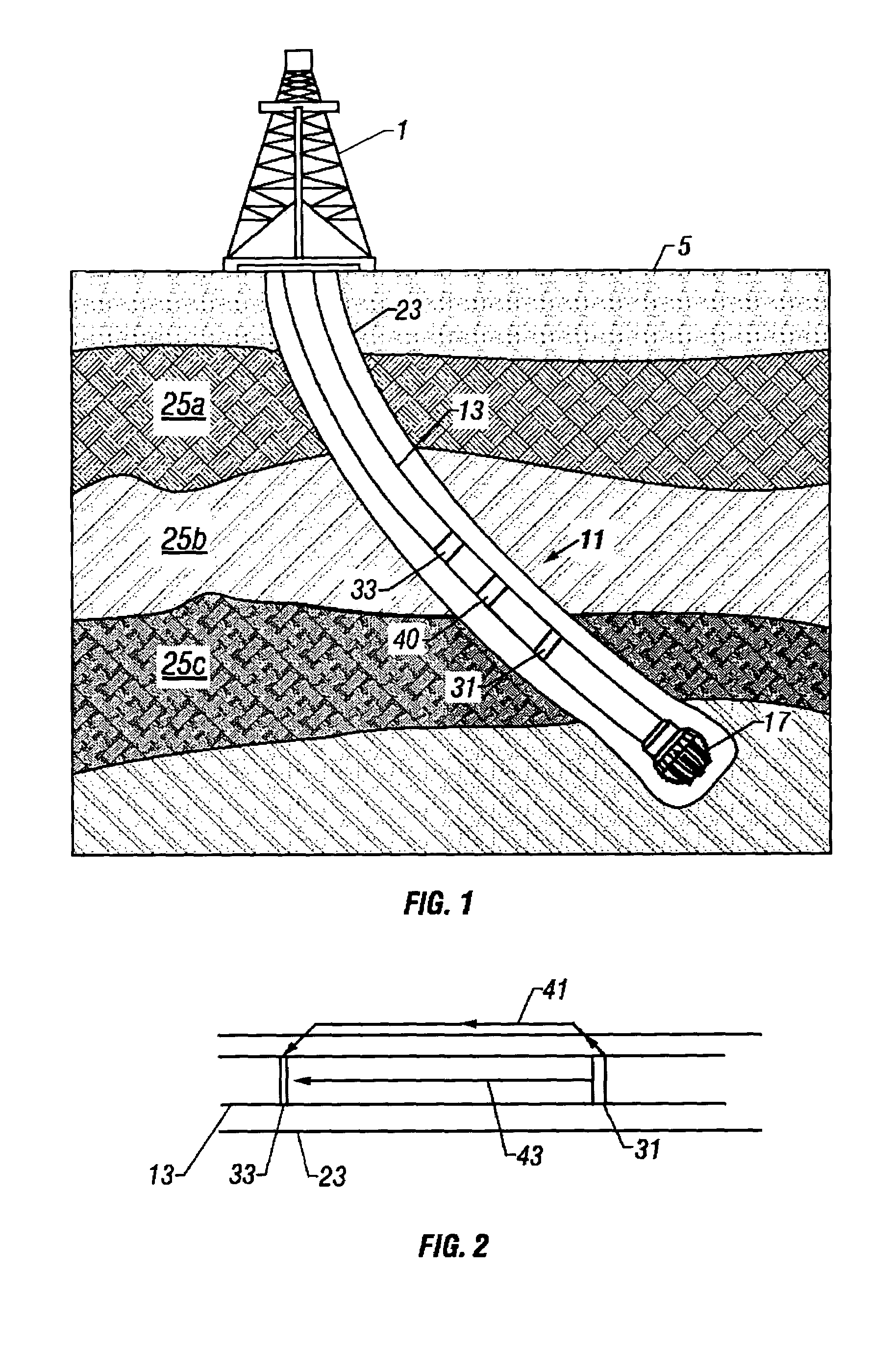Acoustic isolator for downhole applications
a technology of acoustic isolators and downhole applications, which is applied in the field of acoustic logging while drilling apparatuses and attenuation of acoustic pulses, can solve the problems of stalling the completion of wells, and affecting the accuracy of seismic information at great depths
- Summary
- Abstract
- Description
- Claims
- Application Information
AI Technical Summary
Problems solved by technology
Method used
Image
Examples
Embodiment Construction
[0037]The present invention provides a system and method for attenuating acoustic waves in a down hole tool that is being used to obtain information about subsurface formations, some of which are believed to be holding hydrocarbon deposits. FIG. 1 is a schematic illustration of the use of a Measurement-While-Drilling (MWD) apparatus while drilling a well. At the surface of the earth 5 a drilling rig 1 is used to drill a borehole 23 through subterranean formations 25a, 25b, 25c etc. Those versed in the art would know that a drillship or a platform could be used to drill a borehole into subterranean formations covered by a body of water. A drilling tubular 13, that could be made of drill pipes or coiled tubing is used to rotate a drillbit 17 at the bottom, the rotating action of the drillbit and axial pressure carving out the borehole. When coiled tubing is used for the drilling tubular, a drilling motor (not shown) is used to impart the necessary rotary motion to the drillbit.
[0038]A...
PUM
 Login to View More
Login to View More Abstract
Description
Claims
Application Information
 Login to View More
Login to View More - R&D
- Intellectual Property
- Life Sciences
- Materials
- Tech Scout
- Unparalleled Data Quality
- Higher Quality Content
- 60% Fewer Hallucinations
Browse by: Latest US Patents, China's latest patents, Technical Efficacy Thesaurus, Application Domain, Technology Topic, Popular Technical Reports.
© 2025 PatSnap. All rights reserved.Legal|Privacy policy|Modern Slavery Act Transparency Statement|Sitemap|About US| Contact US: help@patsnap.com



